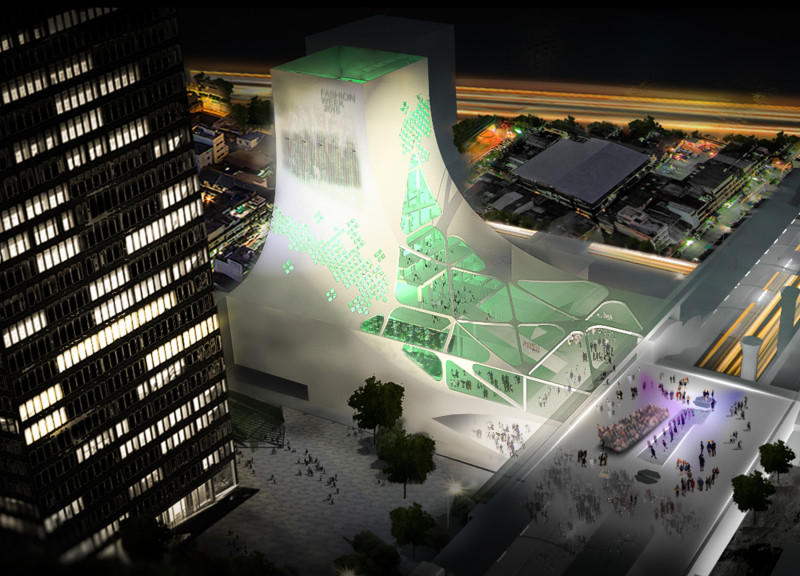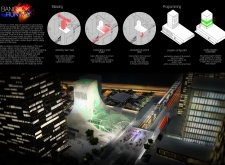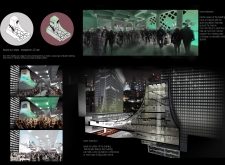5 key facts about this project
At its core, the Bangkok Runway embodies the concept of a community hub, with an architectural layout that couples openness with flexibility. The arrangement of spaces is carefully considered to promote accessibility, ensuring that visitors can navigate seamlessly from level to level. One of the key features is the incorporation of a spiral ramp that invites users to move through different areas fluidly, engaging with the structure and the events held within it. This design choice not only facilitates movement but also suggests a narrative journey, allowing visitors to experience the building holistically.
The materiality of the project further complements its purpose and aesthetic. A combination of concrete and glass serves as the foundational materials, providing both strength and transparency that reflects the surrounding urban landscape. The glass façades create a visual connection between the interior activities and the outside world, inviting passersby to engage with the space. Additionally, the use of transparent LCD panels allows the building's façade to change its character based on ambient light and programmed activities, reflecting the dynamic nature of city life. This element of adaptability is a hallmark of contemporary architectural design and highlights a commitment to sustainability and innovation.
The integration of local textiles as part of the design speaks to the cultural roots of Bangkok, celebrating the region's artisanal heritage while merging it with state-of-the-art technology. The use of these materials is not just decorative; it reinforces the identity of the project as a space for cultural expression and interaction. Through these thoughtful design choices, the Bangkok Runway transcends typical architectural projects by embedding local narratives and fostering community connections.
Unique design approaches are evident throughout the architectural design. For instance, the project strategically places public entries to ensure that the building remains accessible from multiple directions, inviting diverse groups of people to converge. This aspect of the design underscores the goal of creating a multifunctional venue that resonates with the city's diverse demographic. Moreover, the landscaping around the building enhances its integration within the urban fabric, creating pockets of green space that serve as retreats from the adjoining concrete sprawl.
The overall architectural design of the Bangkok Runway is characterized by its responsiveness not only to the needs of the community but also to the environmental context. The combination of functional spaces with innovative materials and local design motifs fosters an environment that encourages public engagement. This approach promotes a culture of sharing, collaboration, and creativity, which is vital to the project’s mission.
For those interested in delving deeper into the architectural nuances of the Bangkok Runway project, it would be beneficial to explore the architectural plans, sections, and designs that illustrate the innovative ideas at play. Understanding these elements will provide further insight into how the project achieves its goal of harmonizing with the urban experience of Bangkok while remaining a beacon of communal activity and cultural exchange.


























